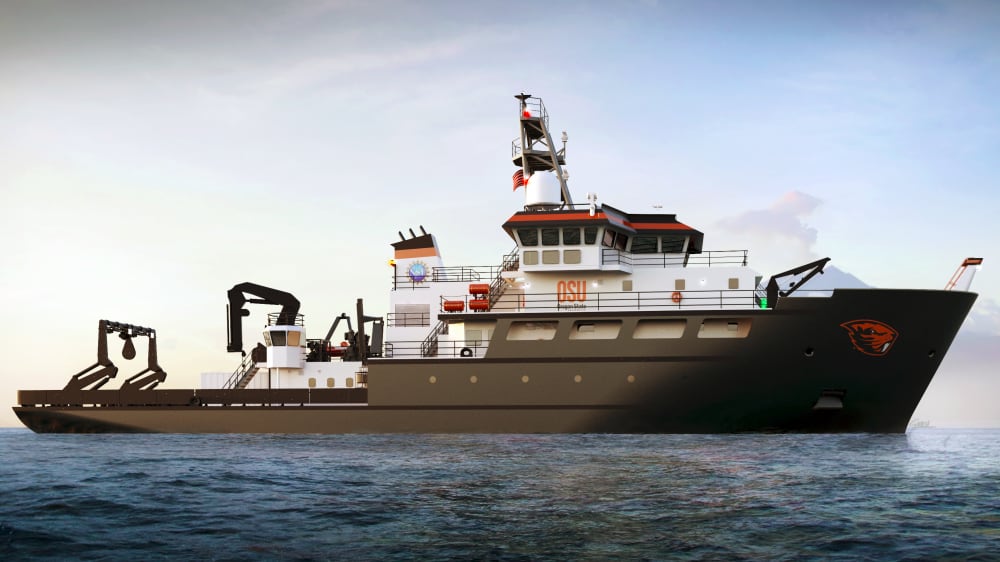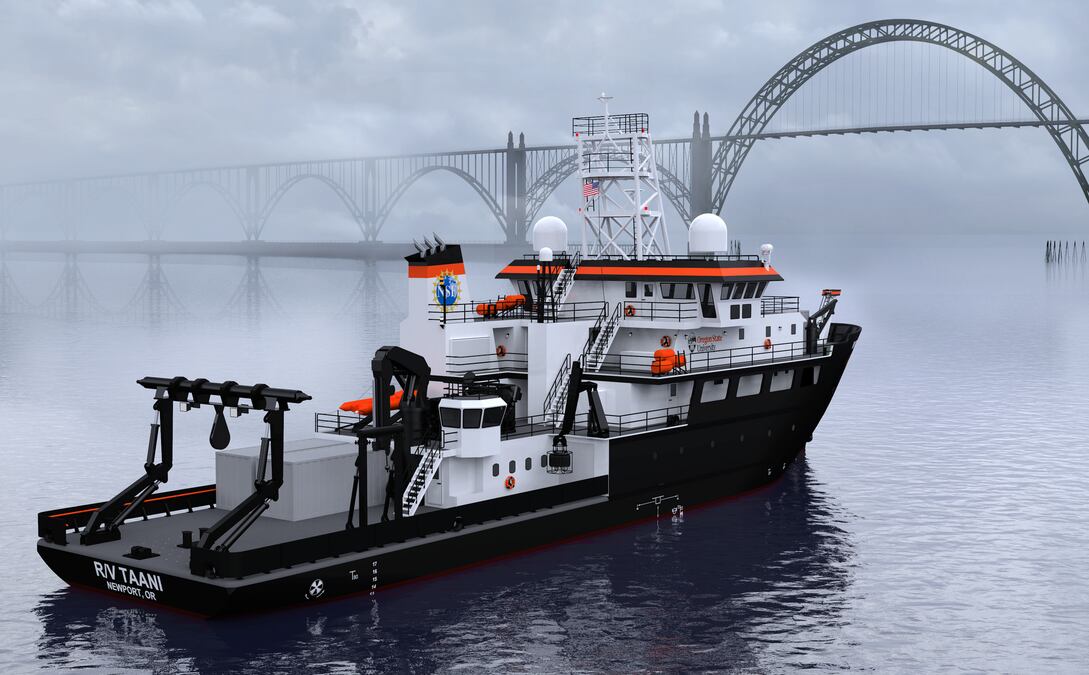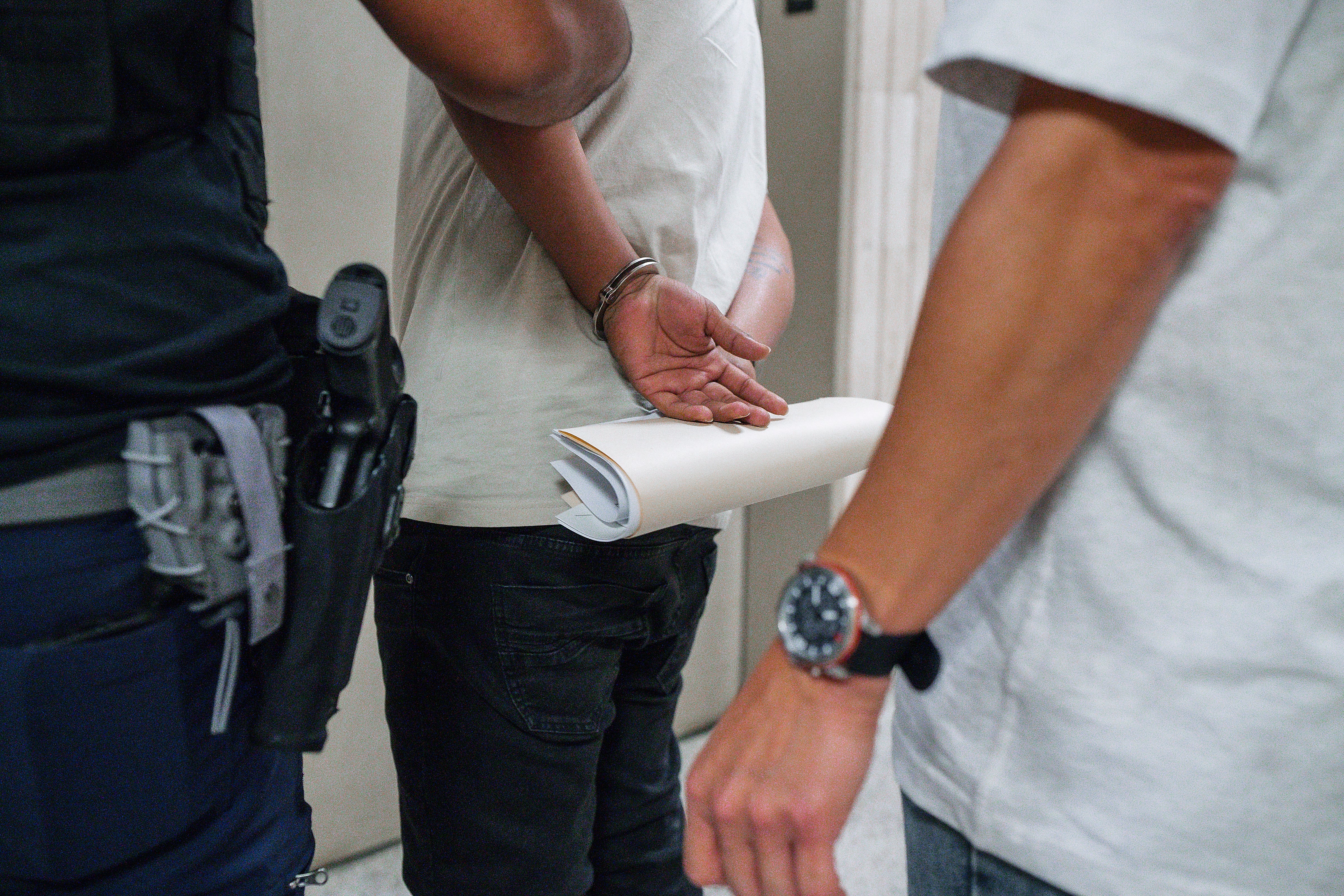NEW ORLEANS — A federal research vessel operated by universities in Louisiana and Mississippi is expected to begin studies in the Gulf of Mexico in 2023.
The Louisiana Universities Marine Research Consortium and the University of Southern Mississippi are leading a consortium created for the 199-foot (60-meter) ship. Universities in every Gulf state, as well as Georgia, Puerto Rico, the Virgin Islands and Mexico also are part of the group.
It will be the third of three research ships being built for the National Science Foundation to add state-of-the-art vessels to the shrinking research fleets in the Atlantic and Pacific oceans and the Gulf. The agency created by Congress said last year that its oversight body authorized up to $365 million for the project.
"Scientists will use this new ship to study societally relevant topics including environmental change, the global hydrologic cycle, biodiversity in the ocean, marine mineral resources, and more." Bill Easterling, the foundation's assistant director for geosciences, said in a news release.
RELATED

Scientist Leila Hamdan at Southern Mississippi said the group will decide research and equipment priorities, and federal scientists also will have use of the vessel.
“We’re very excited,” LUMCON Executive Director Craig McClain said in a phone interview after Tuesday’s announcement.
He said the ship is about double the size of 40-year-old research vessels currently operating in the Gulf, allowing scientists to go farther and stay longer at sea while working multiple projects instead of just one at a time.
All three are designed to run quietly and efficiently, with tools to map the sea floor and to teleconference with land-based scientists and the public.
"Every time the ship leaves port, even if it's going to look at a single place like a shipwreck," it can constantly map the sea floor, said Hamdan, associate director for USM's school of ocean science and engineering in Gulfport.

Since 21-day trips will be possible, scientists can use it to study one of the world’s largest coral reefs, a national marine sanctuary located on the ocean shelf off Texas and Louisiana.
“We have mapped very little of that large coral reef. There are species we have never seen before,” Hamdan said in a telephone interview.
Scientists on board could use high-quality video links to consult with others onshore about such species, she said.
McClain said daily fees will cover operating costs. "Any scientist with funding can utilize the vessel," he said, noting that both Louisiana and Mississippi have committed money for its use by scientists in those states.
Easterling said research in the Gulf of Mexico directly affects the livelihoods of those living and working along the Gulf and beyond.
"The Gulf is an important economic region for fisheries, energy production, and tourism, and understanding this environment has broad relevance to U.S. scientific and economic advancement," he said.
The Gulf ship is expected to be launched in about a year, with delivery scheduled in July 2022, according to an April post on project manager Demian Bailey’s blog at Oregon State University. It will be available for research after a year of rigorous sea trials, the foundation and USM said in a news release.
Oregon State was put in charge of the project to design the ships and oversee their construction in 2013 and will get the first ship, Taani, next summer for its sea trials in the Pacific Ocean.
The second ship, Resolution, is to be delivered in early 2022 to the University of Rhode Island, which heads the operation consortium for Atlantic research.
The third ship, which hasn't yet been named, will have a primary homeport in Gulfport, Mississippi, at the University of Southern Mississippi's Marine Research Center, and a future secondary homeport in Houma, Louisiana.
Gulf Island Fabricators in Houma is building all three ships. All three are designed to be energy-efficient, from the shape of the bow to showers heated by the engines rather than boilers, Bailey said in an interview.
“What’s green is what’s cheap to operate. Win-win,” he said.





